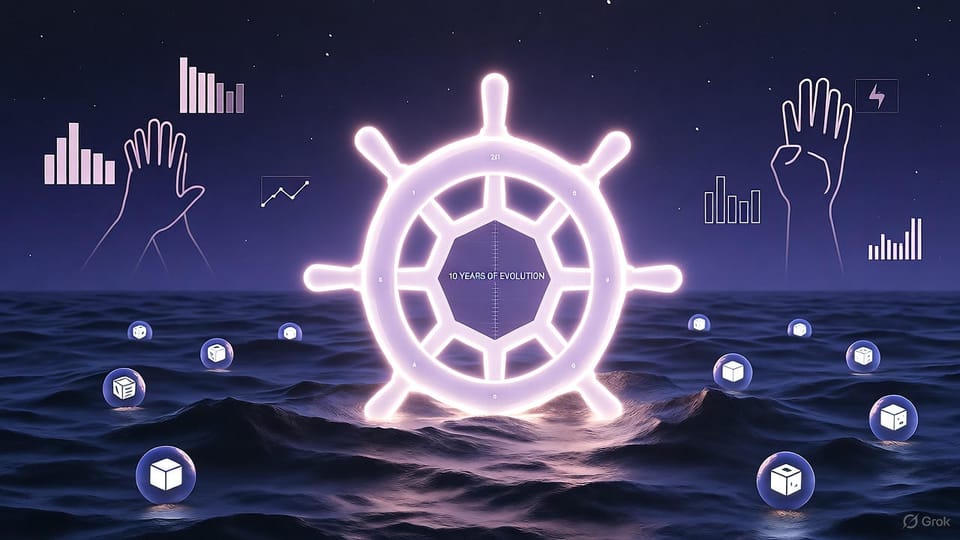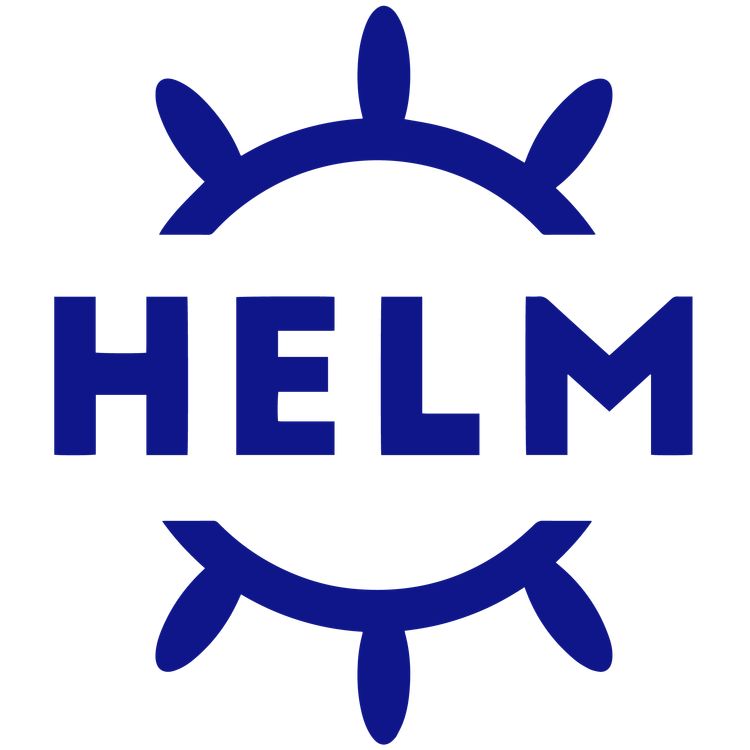Helm at 10: From Hackathon Hack to Kubernetes Helm – A Co-Founder's Fond Reflections

By Rimantas Mocevicius (rimusz), Co-Founder of Helm
Introduction: A Decade of Steering Through the Kubernetes Storm
Imagine this: It's October 2015, and you're at a cozy off-site hackathon in Boulder, Colorado, surrounded by the brilliant minds behind Deis, a pioneering PaaS on Kubernetes. You've just joined the team, the coffee's flowing, and the air buzzes with that electric mix of caffeine and code. You team up with two sharp colleagues—Matt Butcher and Jack Francis—and over whiteboards and prototypes, you hatch an idea that sounds almost too simple: What if Kubernetes had a package manager? Something to bundle those sprawling YAML manifests, make sharing apps as easy as apt install, and turn deployment drudgery into a delight.
That idea? It became Helm. Born on October 15, 2015, during that fateful hackathon, Helm wasn't just a tool—it was a rebellion against the chaos of early Kubernetes. No more copy-pasting configs across teams or fumbling with upgrades. Just charts, releases, and smooth sailing.
Fast-forward to today, October 15, 2025: Helm turns 10. As one of its co-founders (yep, I was the guy hacking on the first chart while testing on my Mac with Kube-Solo), it's surreal to look back. What started as a weekend prototype has ballooned into the de facto package manager for Kubernetes, powering deployments for giants like Google, AWS, and countless startups. Adoption? Skyrocketing—over 75% of Kubernetes users rely on it, according to CNCF surveys. The community? A vibrant force, churning out improvements faster than you can say "dependency hell." And just last month, Helm v4 beta dropped, promising even sleeker features for the cloud-native future.
This post recaps that wild origin story (pulled straight from my 2016 blog, The Little Story How Helm Was Born), traces the epic changes over a decade, celebrates the massive adoption and community magic, and peeks at what's next. Why does it matter? Because in a universe of fleeting tech trends, Helm reminds us that great tools aren't built in boardrooms—they're born from curiosity and collaboration. Like xAI's quest to unravel cosmic mysteries, Helm's journey is about exploring better ways to orchestrate our digital worlds. Buckle up; it's been a hell of a ride.
The Humble Beginnings: From Deis Hackathon to Kubernetes Lifeline
Let's rewind to that hackathon. Deis was pushing boundaries with Workflow (our Kubernetes-native PaaS), but deploying apps meant wrestling with dozens of manifests. "We need a way to package this mess," we grumbled. I showed off Kube-Solo—a nifty prototype booting Kubernetes in under a minute on macOS via xhyve. Jack was knee-deep in Node.js magic, and Matt was tinkering with Glide (a Go dependency tool). Boom: Inspiration struck. Why not a Kubernetes package manager inspired by Homebrew?
The 48-Hour Frenzy
Over 1.5 intense days:
- Matt whipped up
kph, the client-side CLI to interact with Kubernetes. - Jack built
k8space, a proto-server for package management. - I crafted the inaugural chart—a bundle of templated YAMLs for easy installs.
We sketched a design doc that eerily mirrors today's Helm: Charts as versioned packages, values for customization, and hooks for lifecycle events. Tested it all on my local setup—no VMs, just pure speed. Fun fact: We named it "Helm" after a ship's steering wheel, because Kubernetes felt like navigating a stormy sea. (Pun intended—early K8s was rough.)
October 14: Presentation day. We demoed it, hearts pounding, and... we won. Eyes wide, high-fives all around. Next morning, CTO Gabe Monroy pulls us aside over Boulder brews: "Leadership greenlit this. Make it real." Ditched the server (Tiller came later in v2), adopted a git-based repo model like Homebrew, and Matt took the lead. By KubeCon 2015, we had a polished demo. Helm was official.
Early Challenges: No Map, Just Momentum
Back then, Kubernetes was a toddler—v1.1 barely handled basic pods. No Helm meant manual deploys: Edit YAMLs, kubectl apply, pray. Challenges? Infinite. Security holes in early charts, dependency resolution nightmares, and scaling to enterprise needs. But we iterated: v1 focused on basics, v2 added Tiller for server-side rendering (hello, RBAC woes). By 2019's v3, Tiller vanished for direct API magic—security win, simplicity boost.
Analogy time: Launching Helm was like inventing the sextant mid-voyage. We didn't have polished tools; we were the tools. And it worked—because we built for pain points we lived.
A Decade of Waves: Key Features and Changes That Shaped Helm
Ten years, three major versions, countless patches. Helm evolved from a Deis side-project to a CNCF Graduated project under SIG-Apps. Here's the highlight reel—think of it as Helm's "greatest hits" album.
Version Milestones: From Alpha to v4 Beta Glory
| Version | Release Year | Key Changes | Impact |
|---|---|---|---|
| v1 | 2016 | Basic charts, templating, git repos for sharing. | Proof-of-concept: Installed Deis Workflow effortlessly. |
| v2 | 2018 | Tiller server, hooks, improved dependency mgmt. | Enterprise-ready; powered 1000s of apps, but Tiller's security gripes loomed. |
| v3 | 2019 | No Tiller! Direct K8s API, OCI support, better CRDs. | Game-changer: 75% adoption jump; rollbacks and diffs became CLI staples. |
| v4 Beta | Oct 2025 | Breaking changes OK: Reduced tech debt, K8s 1.30+ native, pragmatic features like enhanced testing and ecosystem integrations. | Future-proof: Stability focus, with beta testing inviting community chaos (the good kind). |
v3 was the glow-up—ditching Tiller fixed RBAC headaches, letting Helm talk straight to the API server. OCI support? Charts as container images—share via registries like Docker Hub. Hooks evolved for pre/post-install scripts, making migrations seamless.
Feature Deep Dive: Templating Magic in Action
Helm's secret sauce? Go templating. Here's a snippet from a basic Nginx chart (templates/deployment.yaml):
apiVersion: apps/v1
kind: Deployment
metadata:
name: {{ .Release.Name }}-nginx
spec:
replicas: {{ .Values.replicaCount | default 1 }}
selector:
matchLabels:
app: {{ .Release.Name }}-nginx
template:
metadata:
labels:
app: {{ .Release.Name }}-nginx
spec:
containers:
- name: nginx
image: "{{ .Values.image.repository }}:{{ .Values.image.tag | default "latest" }}"
ports:
- containerPort: {{ .Values.service.port }}
Install with helm install my-nginx ./nginx-chart -f values-prod.yaml. Boom—custom replicas, images, ports. Rollback? helm rollback my-nginx 1. It's like Kubernetes with superpowers.
Real-world win: At Spotify, Helm charts standardize microservices deploys across 1000+ teams. No more "works on my machine" excuses.
Humor break: Remember Tiller? It was like that over-trusting friend who handled your keys—useful, but risky. v3 said, "Nah, DIY time."
Adoption Explosion: Helm's Grip on the Kubernetes Galaxy
If Helm were a ship, it'd be the Enterprise—ubiquitous, reliable, warp-speed. Stats don't lie:
- 96% of enterprises run Kubernetes; 75% use Helm as their package manager.
- Over 50,000 companies globally, from startups to Fortune 500.
- 110,000+ job listings mentioning Helm/K8s in 2025—demand's cosmic.
Why the surge? Kubernetes adoption hit 70% in clouds by 2025, but raw K8s is YAML hell. Helm abstracts it: One command for complex apps like Prometheus or Jenkins. Case study: Netflix uses Helm for Chaos Engineering—deploying "broken" charts to test resilience. Result? Fewer outages, happier streams.
In multi-cloud? Helm's portable charts shine—Aks, EKS, GKE, all play nice. Pro tip: Pair with FluxCD for GitOps; it's like Helm on autopilot.
The Community Engine: Maintainers, PRs, and Endless Improvements
Ah, the heart of it all: You. The Helm community. From GitHub's 10k+ stars to weekly SIG-Apps meetings, it's a hive of innovation. As a co-founder, watching this? Heartwarming—like seeing your kid ace quantum physics.
Contribution Highlights
- 88,000+ contributors across CNCF projects, with Helm leading app deployment.
- Repos like Artifact Hub host 2,000+ charts; community ones (e.g., OpenCharts) fill gaps for tools like MLflow.
- v4 beta? Fueled by HIP-0012—community-voted roadmap for debt reduction and K8s-native features.
Improvements roll in: Better security scanning (Trivy integrations), chart testing MVPs, and inclusivity (first-time contribs up 30% post-v4 kickoff). Sarcasm alert: Who needs paid devs when Reddit threads solve RBAC puzzles overnight?
Looking Ahead: v4 and Beyond – Steady as She Goes
v4 beta (October 2025) isn't revolution—it's refinement. Expect: Leveraged K8s 1.30 APIs, pragmatic breaks for cleaner code, and ecosystem hooks (e.g., Pulumi GA for Helm Releases). Full release? Pre-KubeCon NA 2025. xAI vibe: Like probing black holes, v4 explores uncharted config depths.
Open questions: How will AI-generated Helm charts change things? (Grok, take notes 😄)
Conclusion: Grateful at the Helm – Let's Keep Exploring
Ten years ago, Helm was a spark in Boulder's coffee shops. Today? It's the rudder for Kubernetes' armada—75% adoption, thriving community, v4 on the horizon. Key takeaways:
- Origins matter: Hackathons birth legends; curiosity trumps credentials.
- Evolution wins: From Tiller to templating triumphs, iterate ruthlessly.
- Community > Code: 88k hands make light work—and epic tools.
- Adopt wisely: Start with charts; scale to GitOps.
As a co-founder, it's pure joy seeing Helm guide devs through Kubernetes' mysteries. Here's to the next decade: Smoother sails, bolder charts, and fewer YAML-induced migraines. Fair winds!

